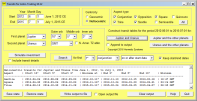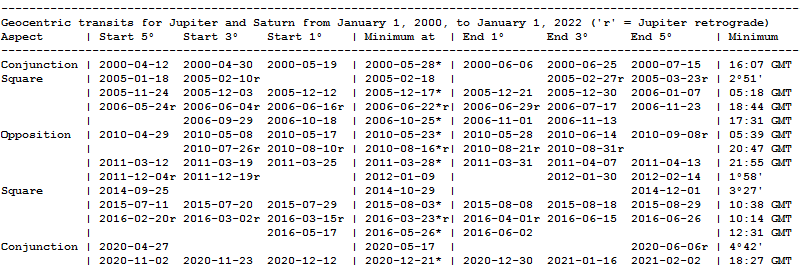Transits for Astro‑Trading | ||
A Windows Program to Calculate Exact Dates of Geocentric and Heliocentric Planetary Transits | ||
Transits for Astro‑Trading | ||
A Windows Program to Calculate Exact Dates of Geocentric and Heliocentric Planetary Transits | ||
This software is fully-functional and not time-limited. It runs on any version of Windows.
Donate via Stripe to download this software.
 Click for full size |
This software uses a new method for displaying the periods of planetary transits, known as transit tables. The two transit tables below (for orbs of 5°, 3° and 1°) show that heliocentric transits differ significantly from geocentric transits. This is because in geocentric astrology (but not in heliocentric astrology) a planet may be retrograde (that is, appear to move backwards). Consequently transits are much more regular in heliocentric astrology than in geocentric astrology, as the geocentric and heliocentric transit tables below show (only conjunction, square and opposition are included):


User Manual |